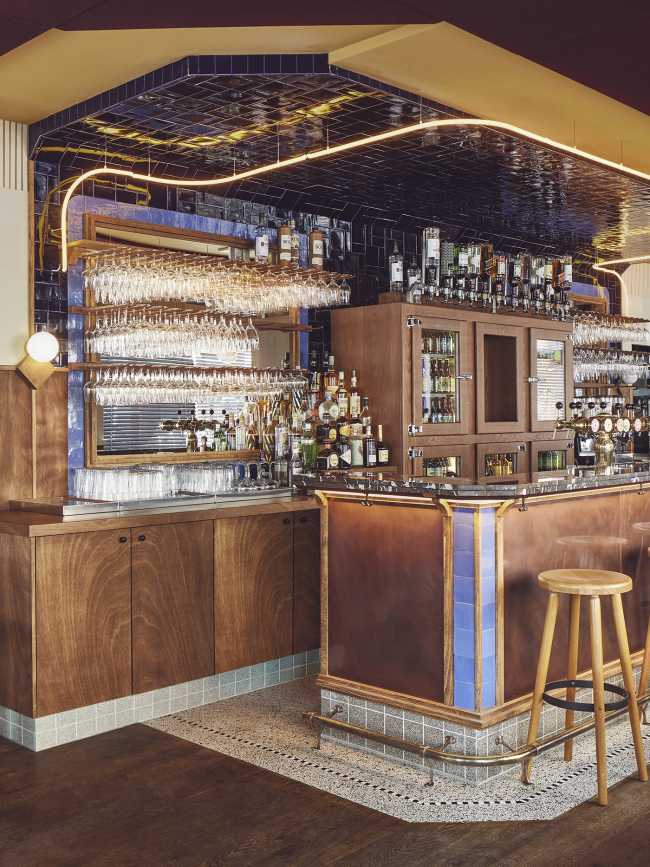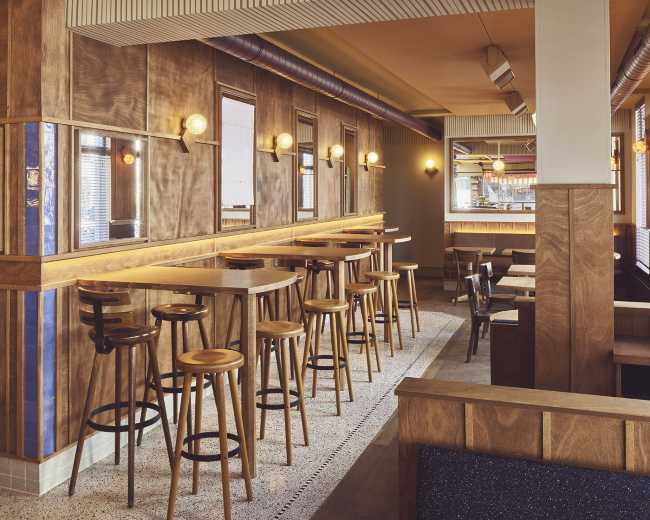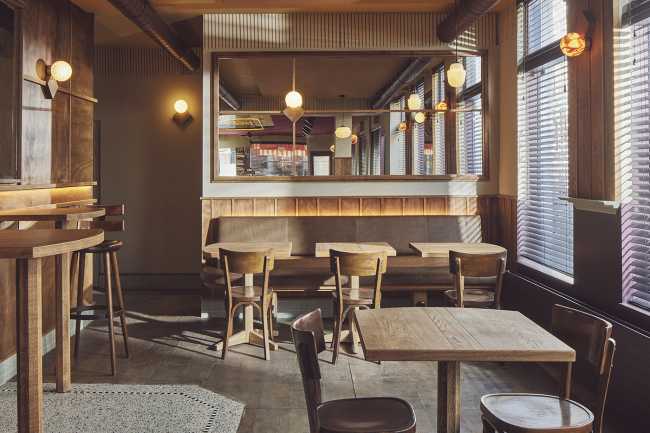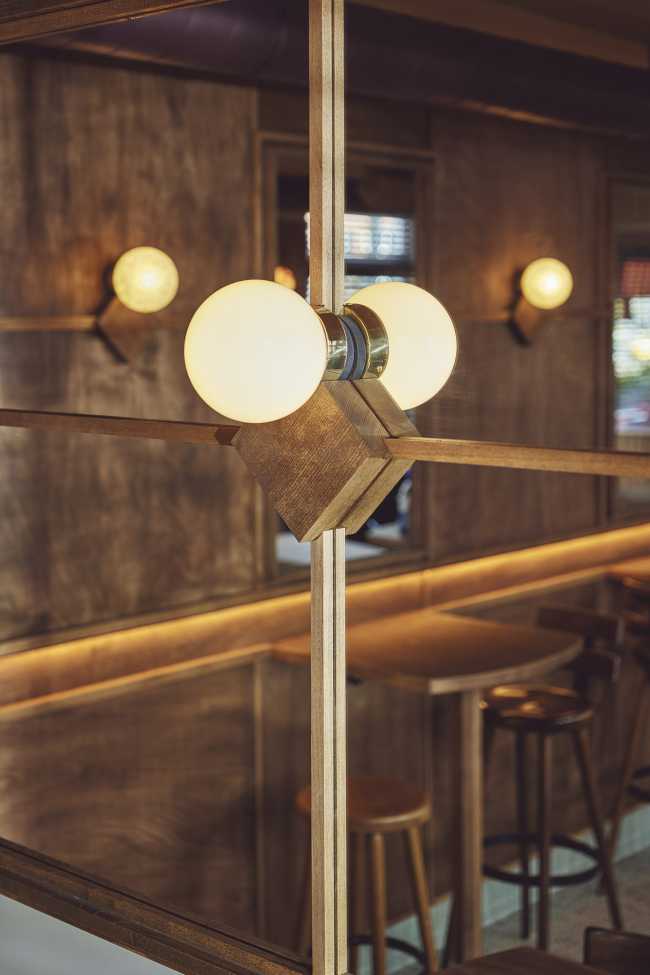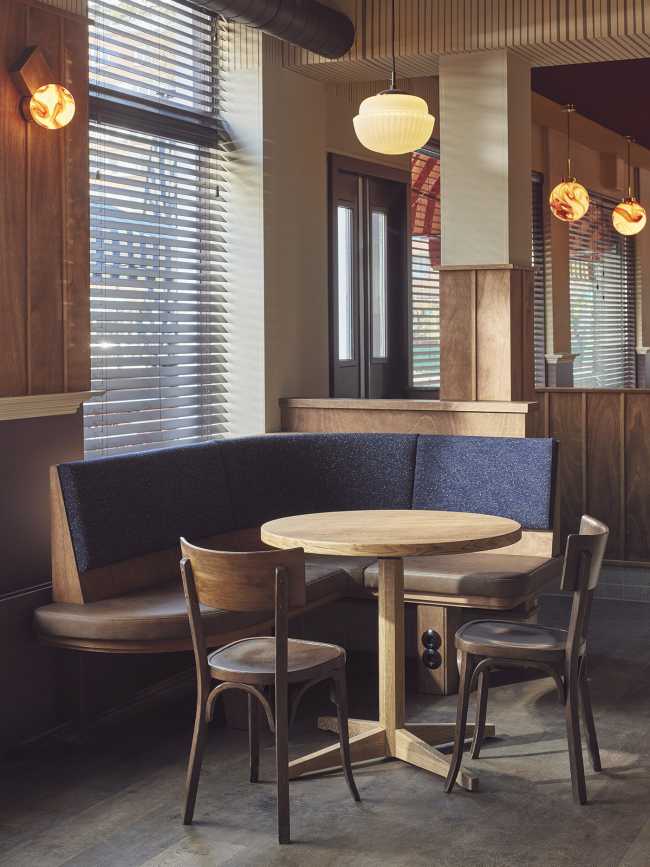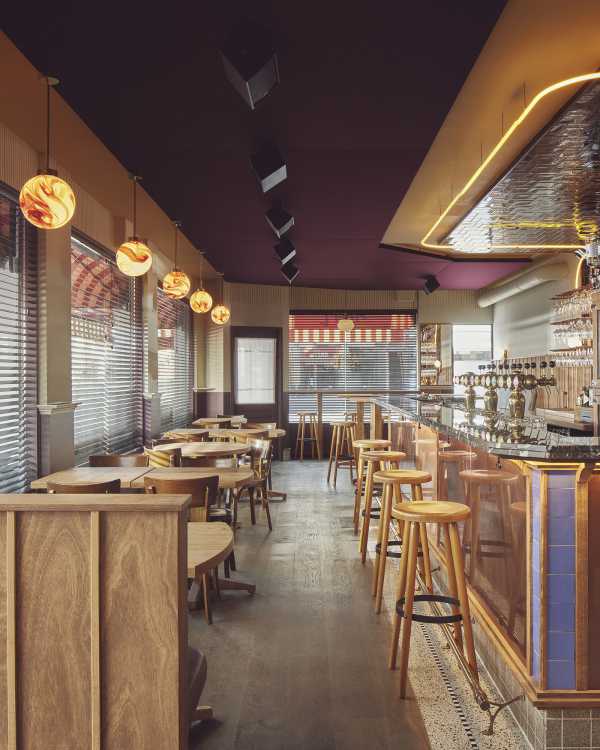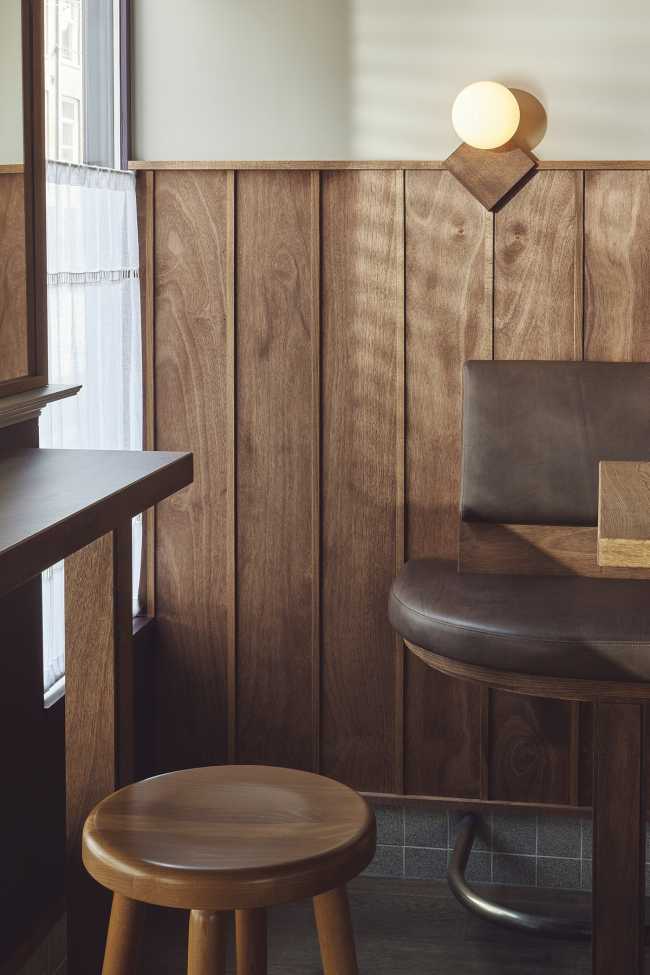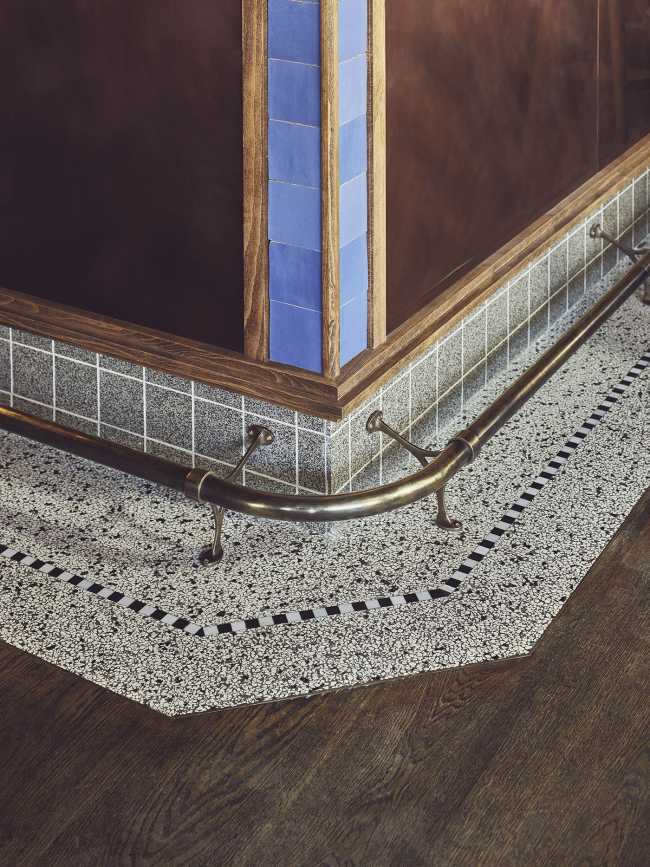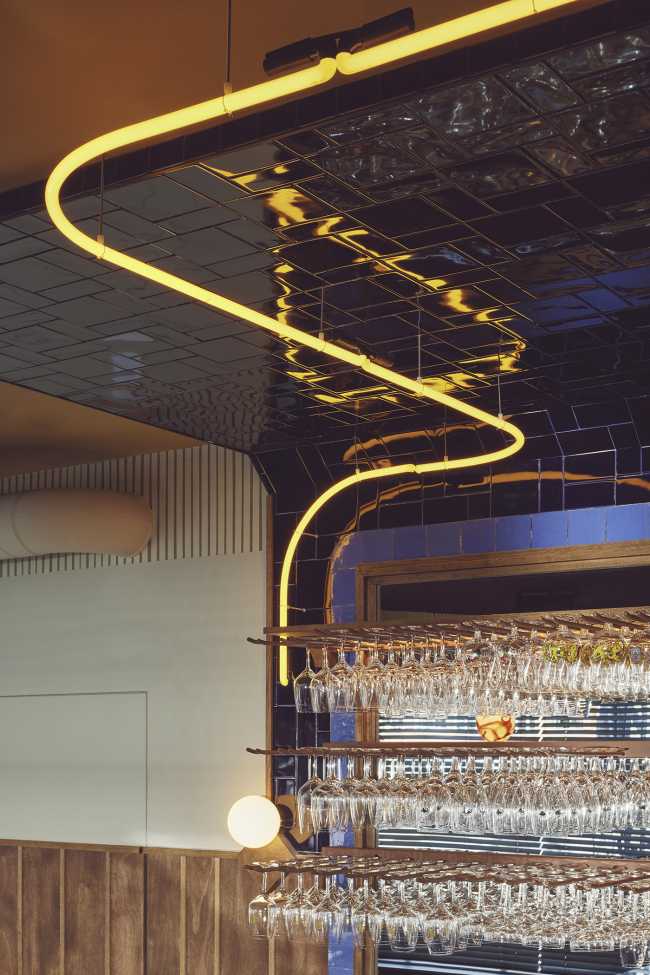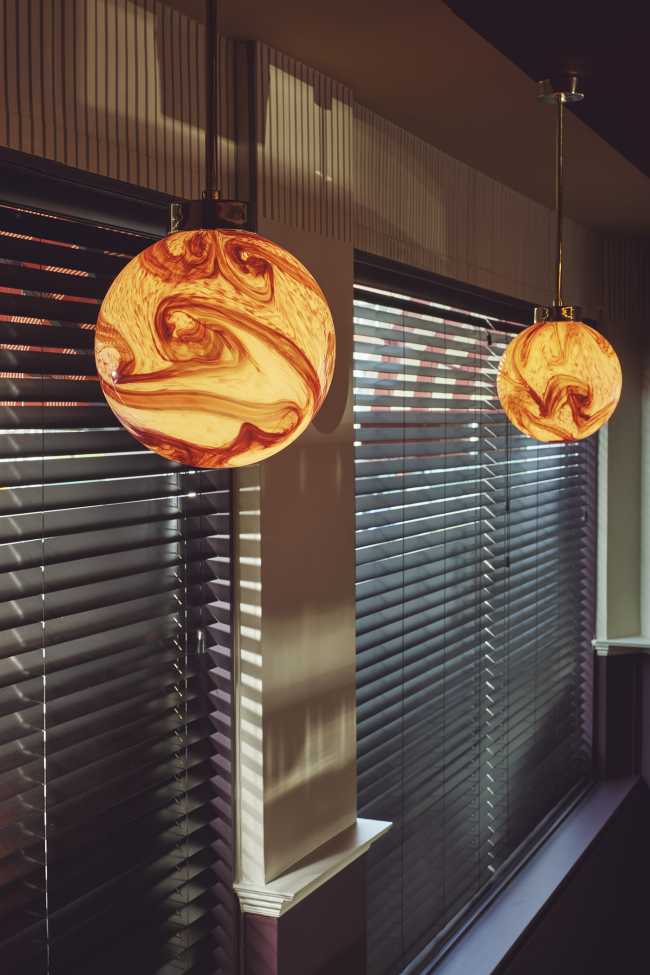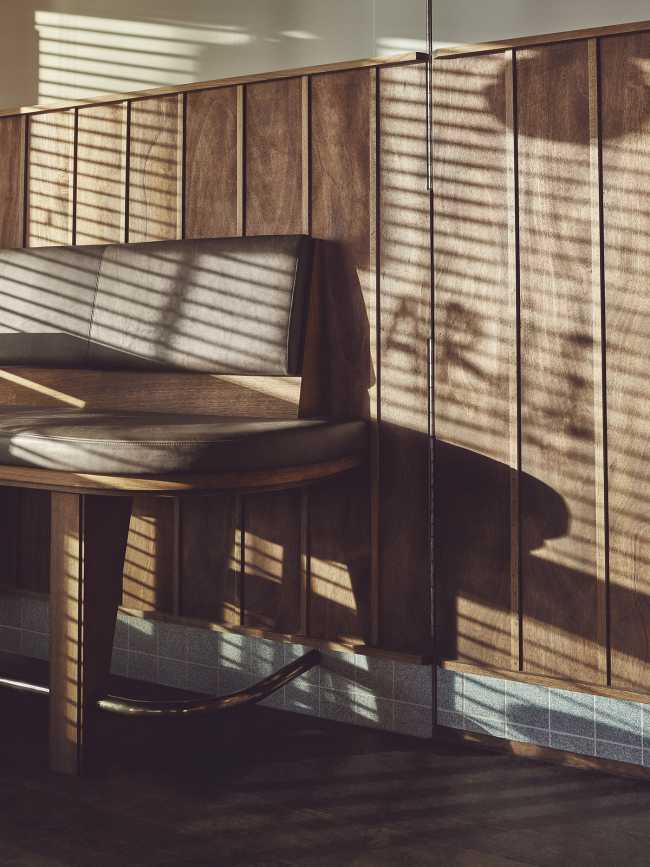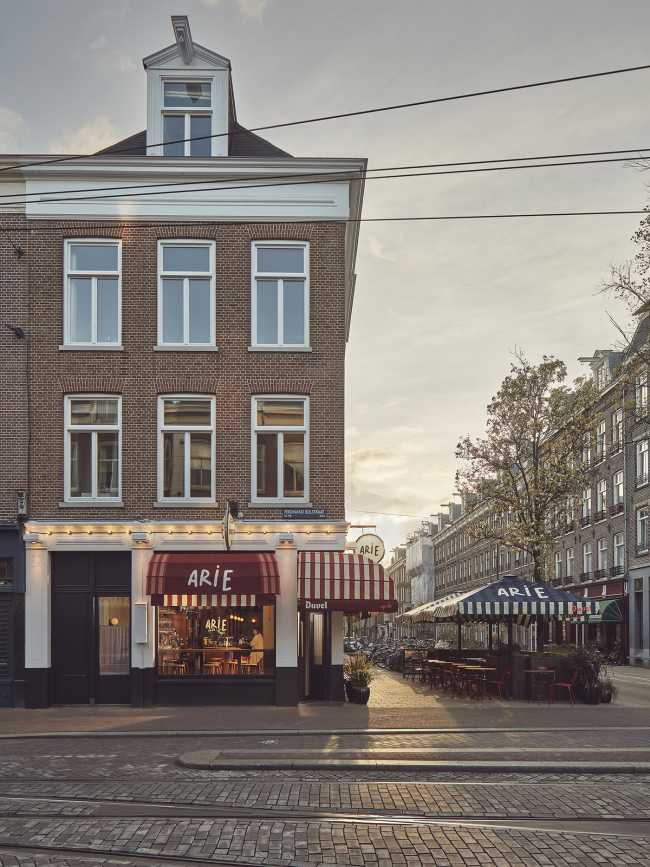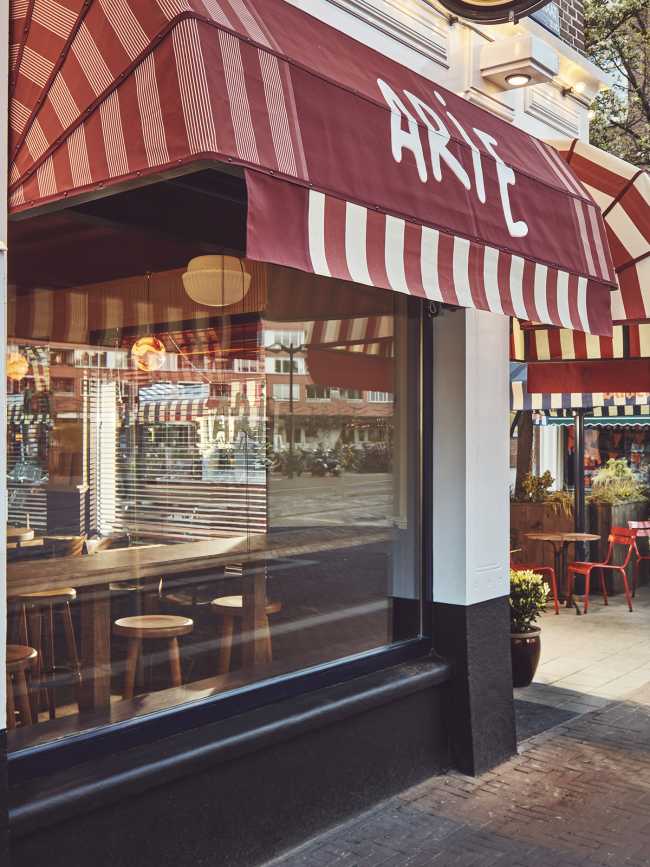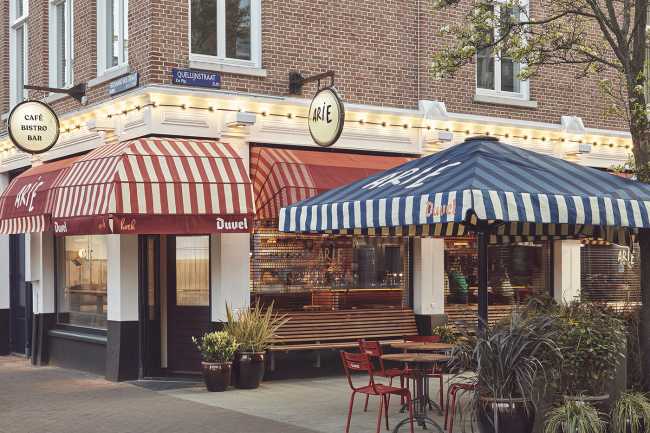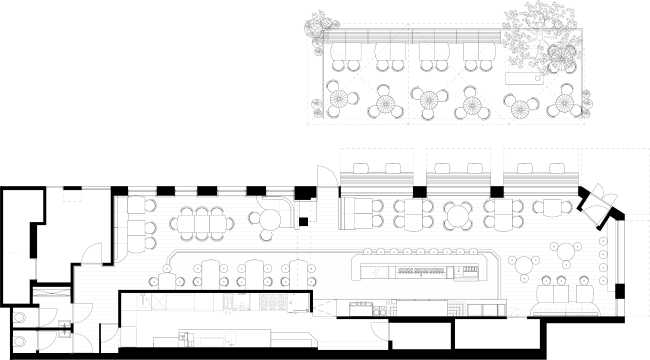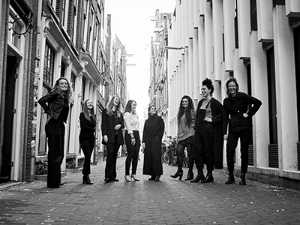The building in which Arie Op de Hoek is housed dates back to 1876. Its location at the intersection of the Ferdinand Bolstraat and Quillijnstraat gave Arie its second name ('op de Hoek', meaning 'corner'). Since the end of the Second World War, there has always been a bar or café in this lively part of the city to welcome generations of Amsterdammers
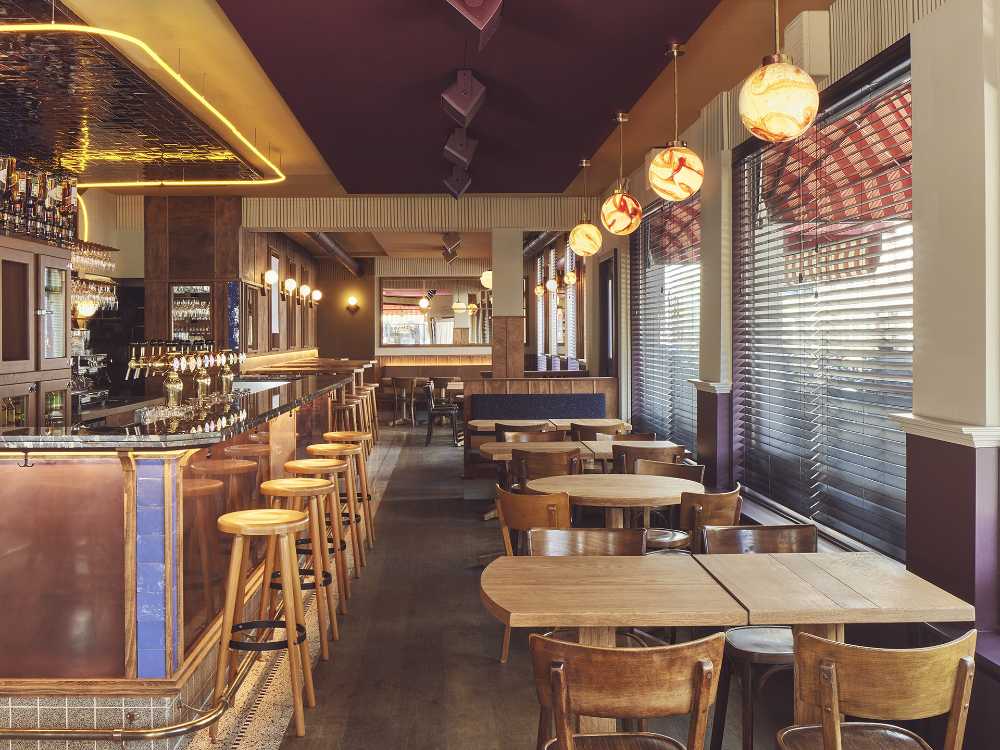

Arie Op de Hoek, a place that can quickly become a second home, cosy and ... thirst-quenching, in the best tradition of Dutch brown cafés
Arie Op de Hoek is the latest addition to the Goudvisch family. The imaginary family of bar owners that started with Bonnie welcomes a new cousin, Arie, in Amsterdam's De Pijp district
- #Europe
- #Netherlands
- #Pub / Brewery
- #Wood
- #Stone
- #Ceramic
- #Color
- #Restyling
- #Interior
- #Interior Design
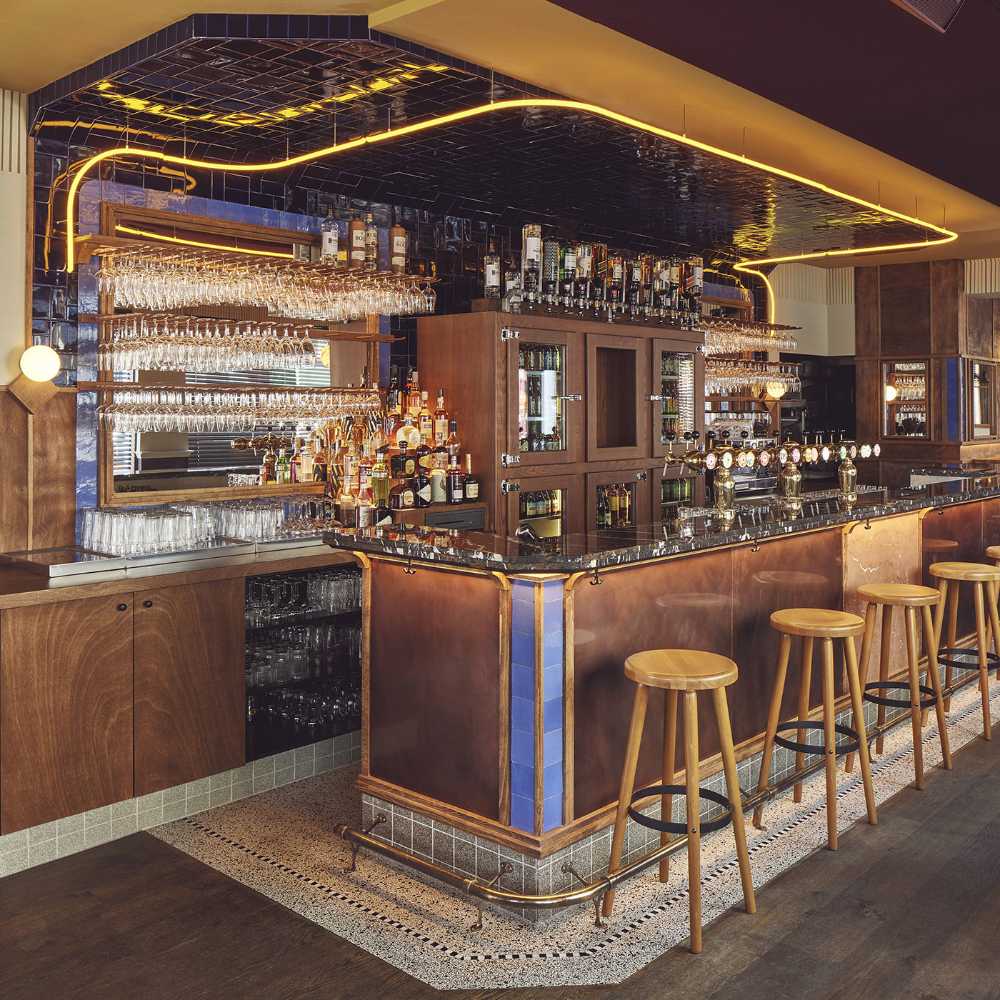
For its latest 'incarnation' as Arie Op de Hoek, Studio Modijefsky was asked to design a modern 'brown café'.These legendary Amsterdam cafés originated with the people who lived on the ground floors of buildings and opened their homes to serve food and drink while trying to supplement their low income. They got their name from the customers' incessantly lit cigars and the cigarette smoke that obscured the walls, a status to which Arie pays homage with coloured wooden panelling
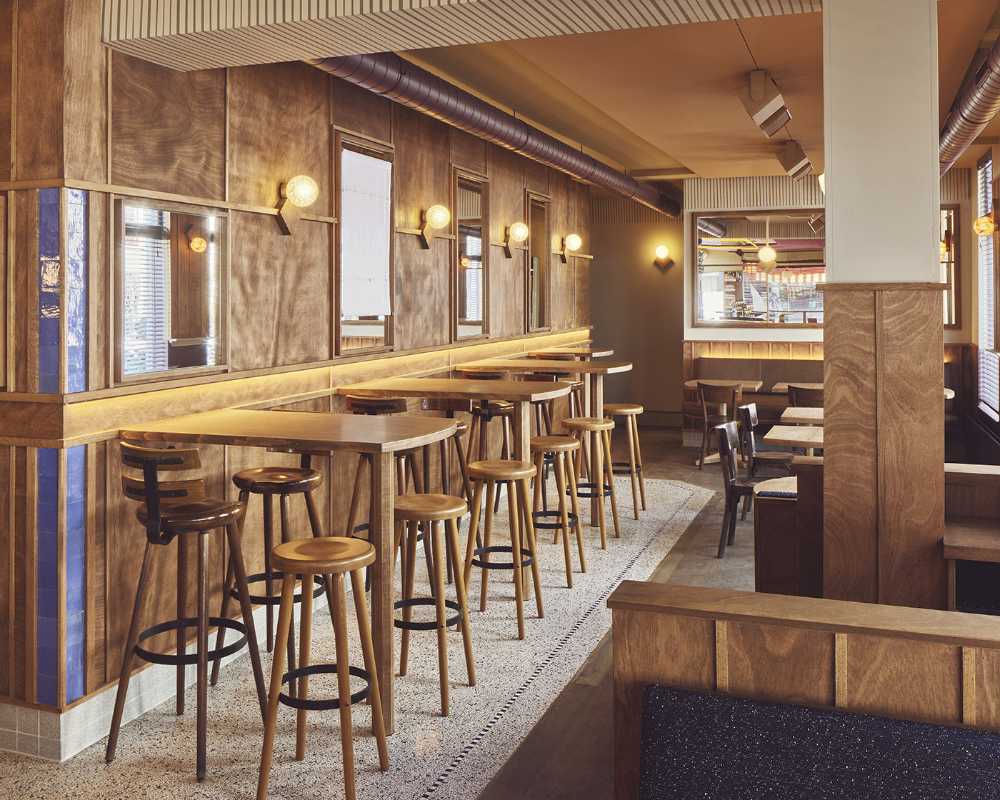
In order to recreate the atmosphere of times gone by, Studio Modijefsky focuses on the popular materials of the time: copper, tiles, fabrics and wood. Darkened beech is used throughout, creating a strong contrast to the aged copper and red marble of the bar. Blue tiles in a wide variety of tones accentuate these contrasts, linking the yellow and red of the ceiling with the back of the bar, which is also used in the interior of the ceiling with the back of the bar, where a custom-made cooler is reminiscent of a type of artisanal refrigerator that could have been found in the early 20th century
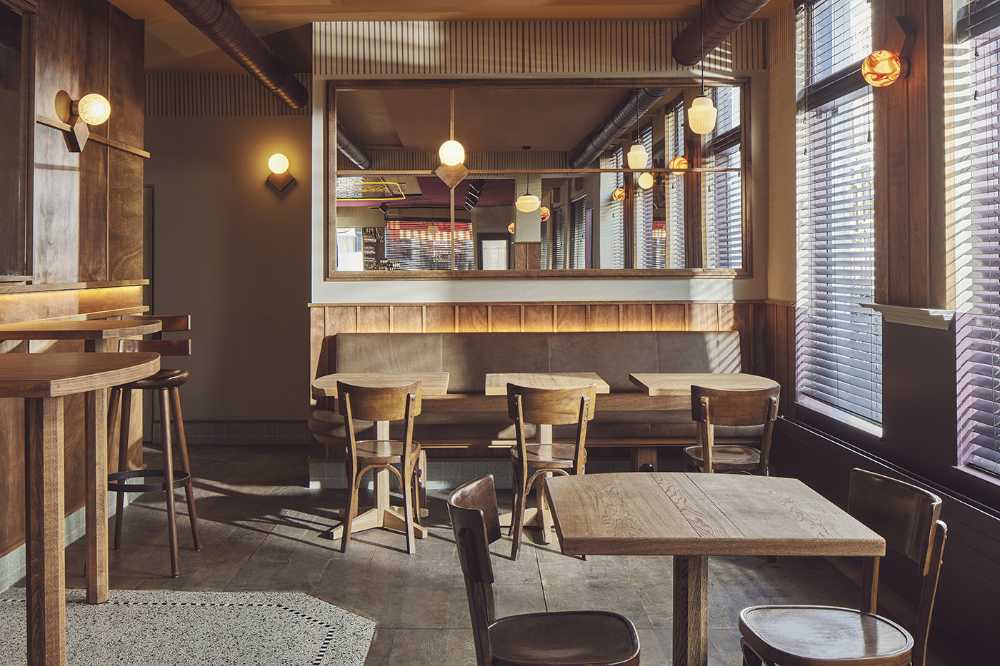
Each area has a distinct mood and feeling. The rich visual landscape at the front shifts to a more relaxed monotonous ambience in the narrow part at the back. Here the existing openings have been projected onto the blank wall and used as a model for the mirrors used as virtual openings. Several elements of the original room were reproduced to measure and customised, such as the window frames and the wooden elements of the wall lamps
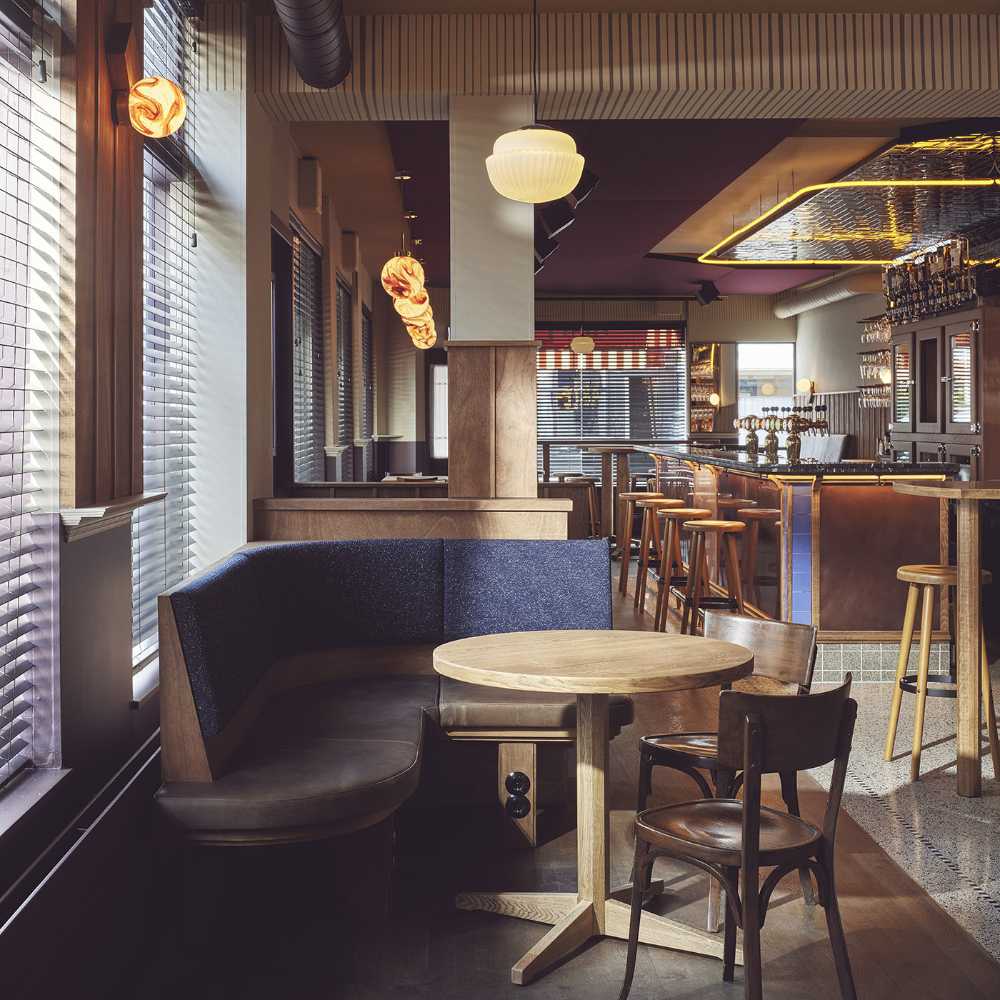
Everything in Arie Op de Hoek, from the panelling, to the cladding materials, to the cooling cupboard at the back of the bar combines to create an authentic atmosphere that is disappearing from the Dutch hospitality scene
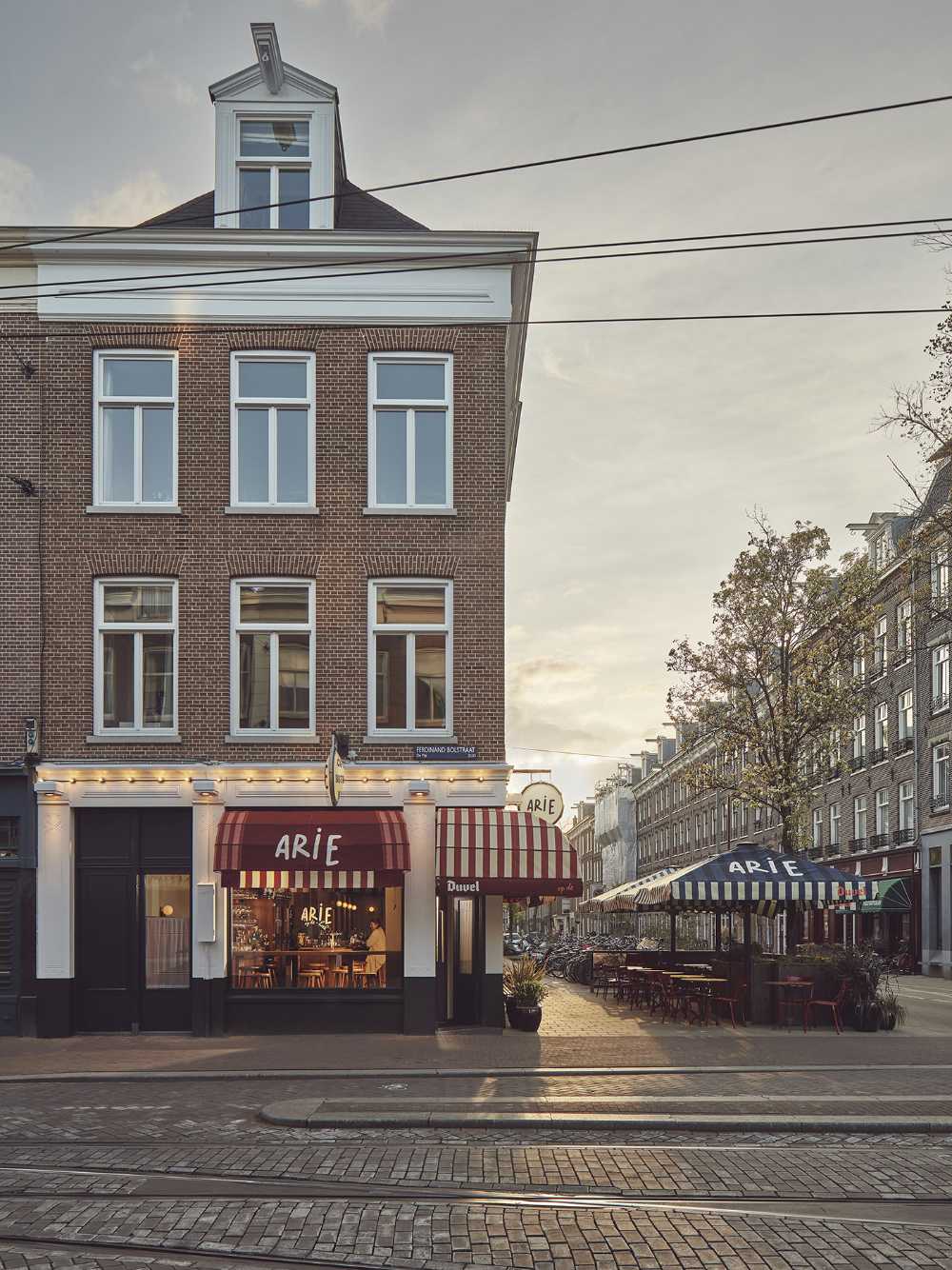
Gallery
Photo credits
Top image, content and gallery images: Maarten Willemstein

